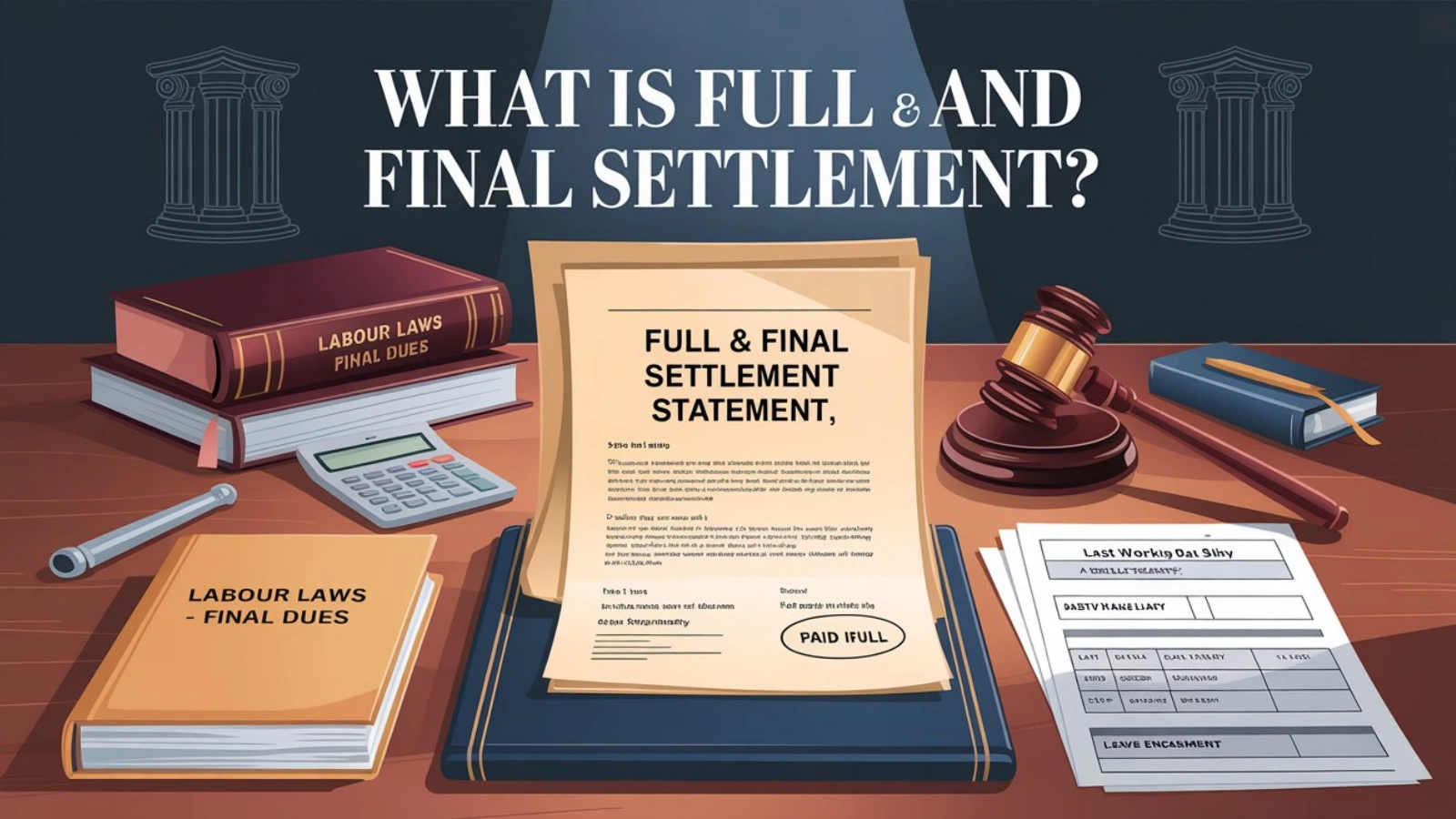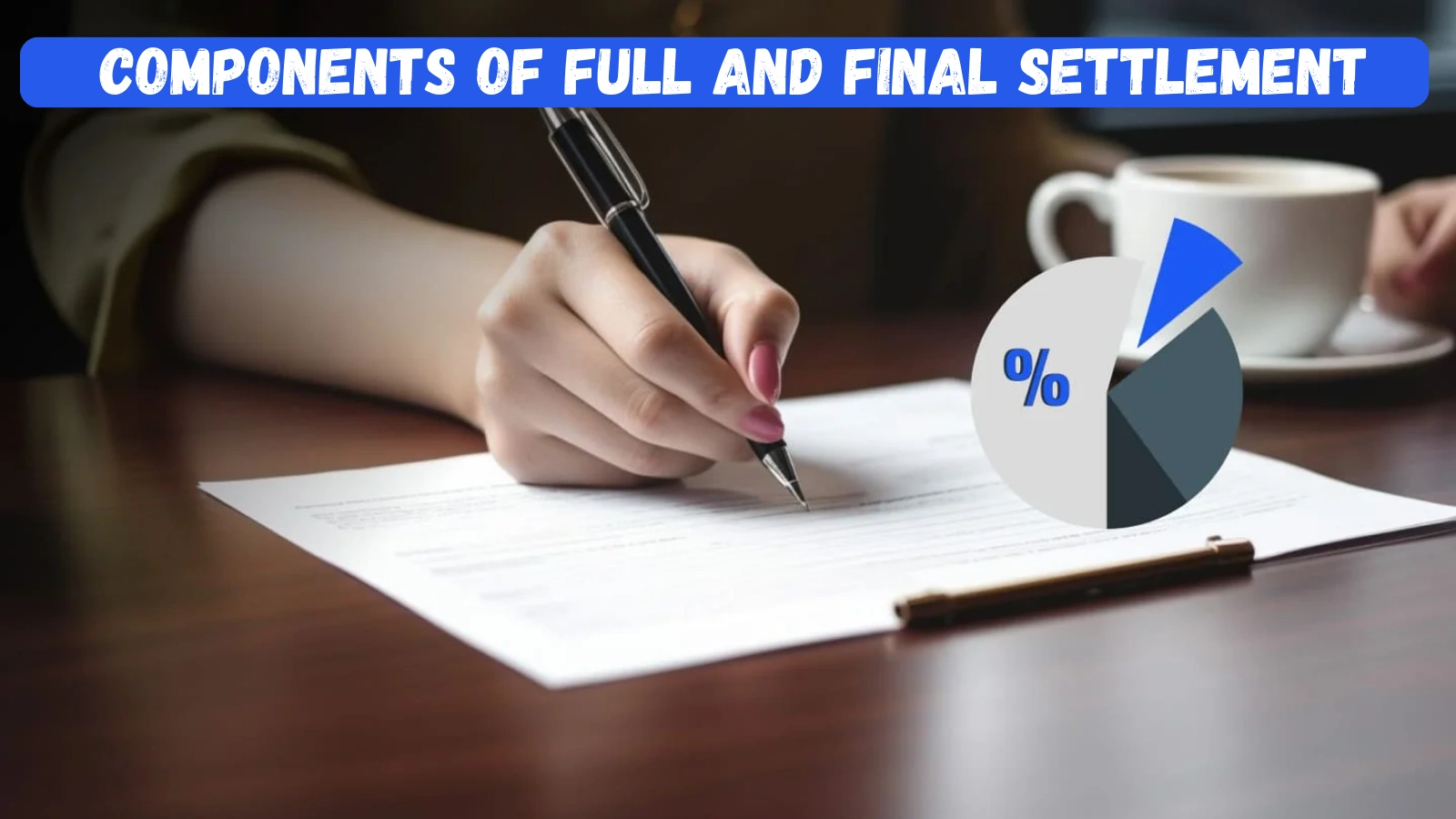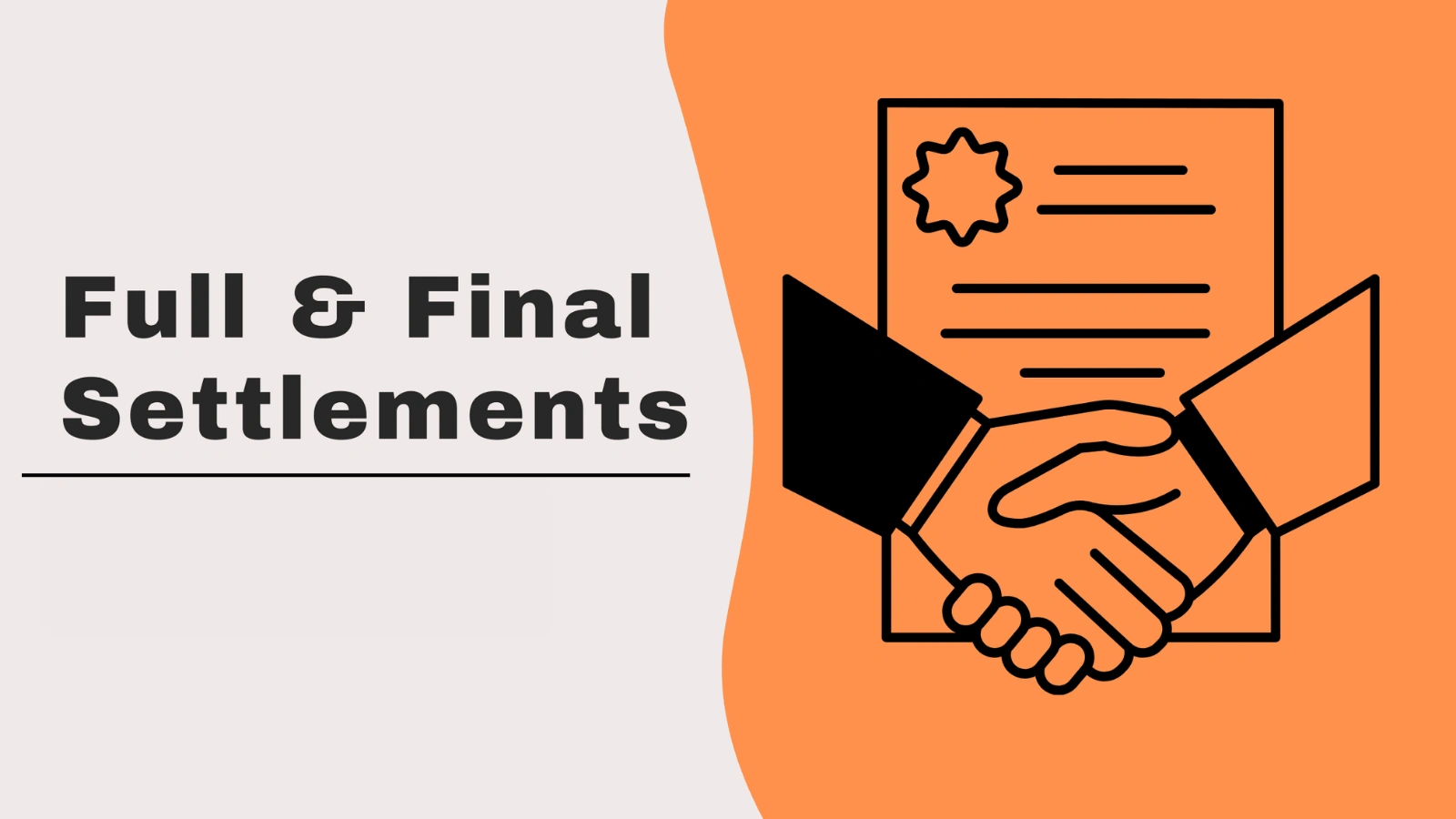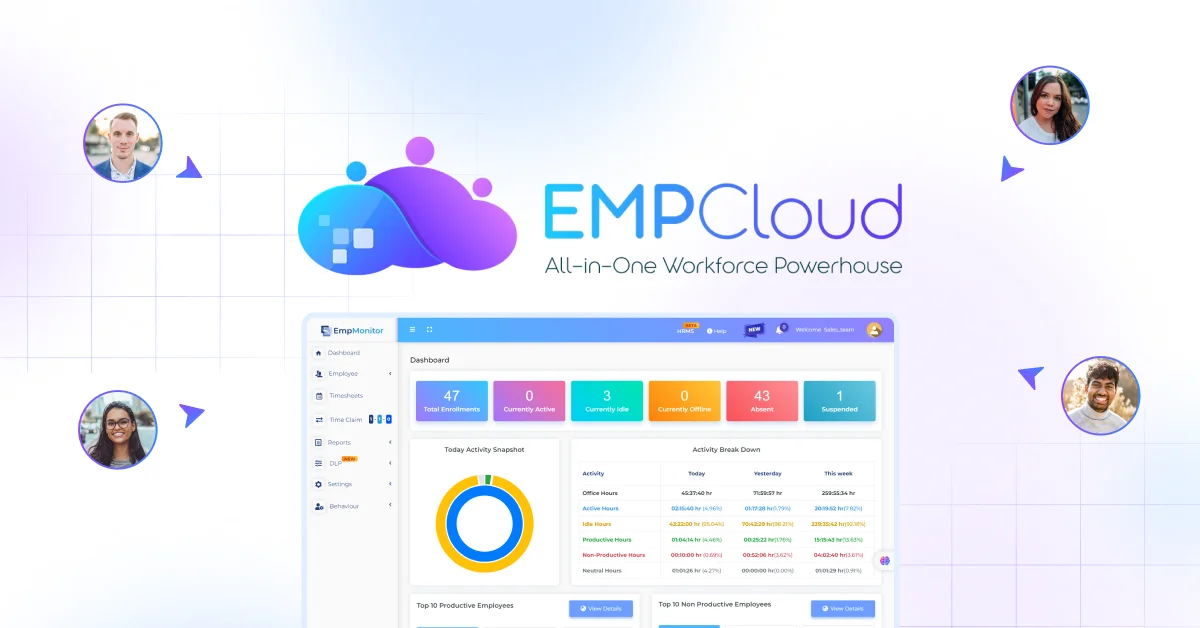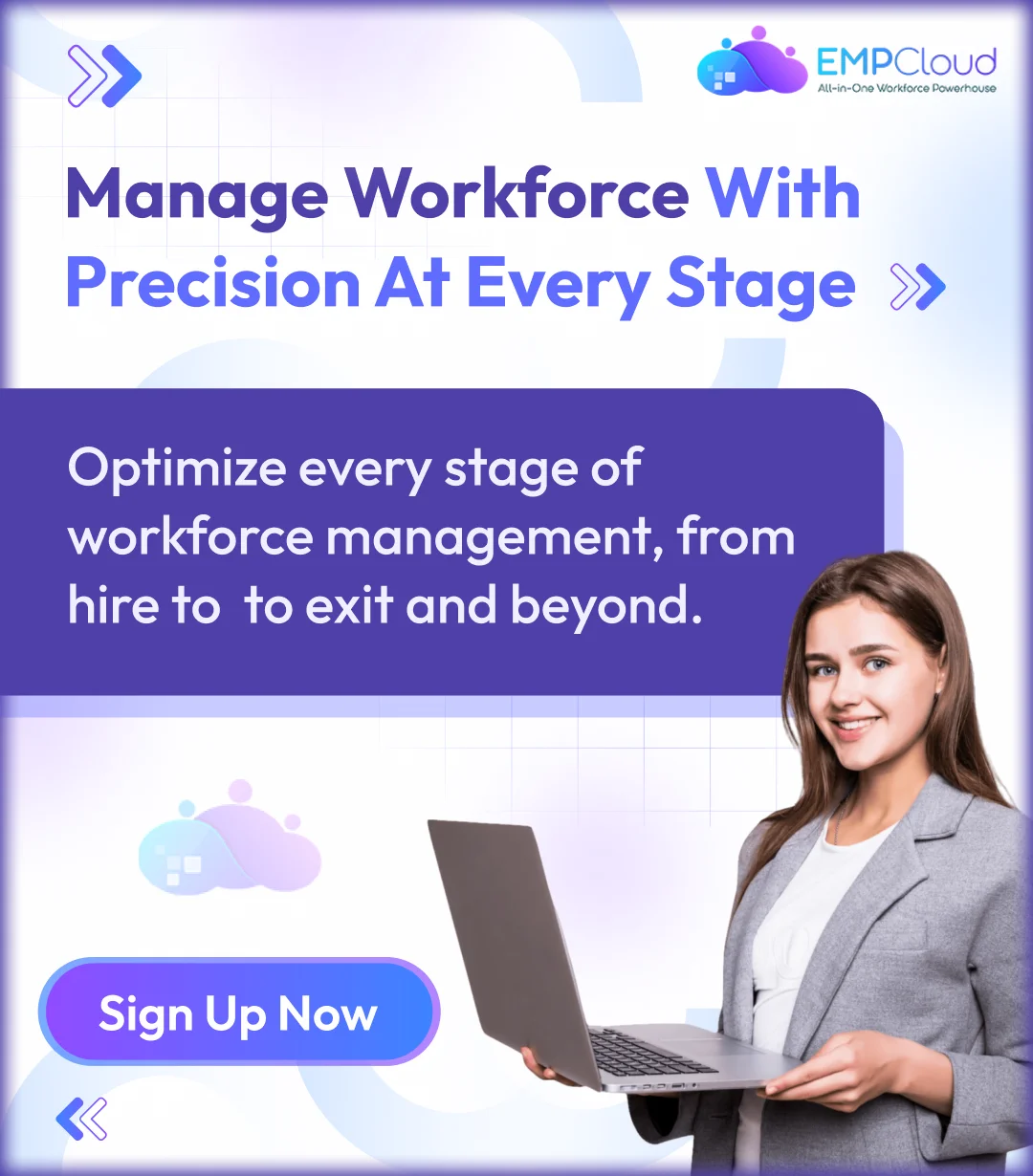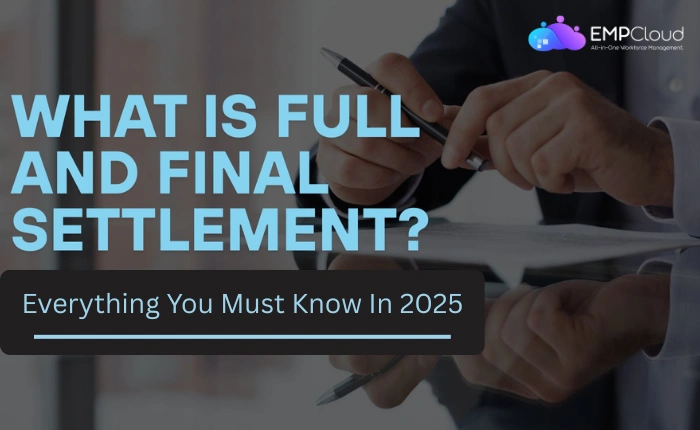
When an employee leaves an organization, one of the most critical steps in the exit process is the full and final settlement. This procedure ensures that both the employer and the employee conclude their professional relationship without any financial or legal disputes. But what does this process actually involve, and why is it so important? In this blog, we’ll explore the answers in depth.
Hit ‘Play’ Button & Tune Into The Blog!
What Is Full And Final Settlement?
The full and final settlement is the procedure through which an employer clears all outstanding dues payable to an employee at the time of exit. It includes unpaid salary, bonuses, encashment of leaves, gratuity, deductions, and other financial obligations. This process ensures both parties part ways without pending liabilities or conflicts.
For many, confusion arises around terms like fnf payment and fnf settlement. Essentially, they all point to the same concept: financial closure between an employee and employer when the employment relationship ends.
Why Is Full And Final Settlement Important For Employers And Employees?
The full & final settlement is not just a financial closure, it carries long-term implications for both the employee and the employer. Its importance can be understood from several perspectives:
Legal Compliance:
Employment and labor laws in most countries mandate that an organization must clear dues within a specific timeframe, usually between 30–45 days. Timely settlement ensures companies stay compliant with these regulations, preventing penalties, fines, or litigation.
Financial Transparency:
For employees, the settlement provides clarity on pending salary, leave encashment, bonuses, and deductions. Using a robust leave management system ensures that leave balances are accurately tracked, making leave encashment calculations precise and transparent. This reassures employees that their contributions are recognized and fairly compensated.
Trust and Goodwill:
When organizations honor commitments and release dues promptly, employees leave on a positive note. Even after exit, they may recommend the company to others or return in the future (boomerang employees), strengthening long-term relationships.
Employer Protection:
Proper settlements help companies avoid disputes related to unpaid wages or wrongful deductions. This reduces the risk of employees filing complaints with labor authorities or damaging the organization’s reputation publicly.
Stronger Employer Brand:
In a competitive job market, companies that handle exits professionally and transparently stand out. Word-of-mouth from former employees, online reviews, and industry reputation all influence how potential candidates view the company.
Smooth Offboarding Experience:
A structured settlement process reflects the professionalism of HR and management. It ensures the exit process is not just about saying goodbye but about closing the chapter with fairness, respect, and efficiency.
Without a proper full & final settlement, the exit process remains incomplete, which can lead to dissatisfaction, legal issues, and long-term reputational damage for the company.
Also Read:
How To Implement A Leave Management System?
What Are The Key Components Of Full And Final Settlement?
An effective full and final settlement includes several financial elements. Let’s break them down:
1. Unpaid Salary:
The first component is unpaid salary up to the employee’s last working day. If the payroll cycle runs mid-month, calculations must reflect actual days worked.
2. Leave Encashment:
Many organizations allow employees to encash unused paid leaves. During settlement, HR must calculate the value of accumulated leaves based on the current salary.
3. Gratuity and Retirement Benefits:
If the employee has completed the required tenure, gratuity and other retirement benefits are added to the full & final settlement.
4. Bonus and Incentives:
Any pending performance-linked bonuses or incentives also need to be cleared.
5. Deductions:
Employers must deduct outstanding loans, tax liabilities, or company property costs (like laptops not returned).
6. Provident Fund and Pension:
Although processed separately through government portals, HR should guide employees on how to claim these benefits.
What Is The Legal Framework Around Full And Final Settlement?
The full & final settlement is not merely a corporate practice, it is supported by labor laws. Companies are legally required to complete settlements within a reasonable timeframe, usually between 30 to 45 days of the employee’s last working day.
If settlements are delayed or mishandled, employees can approach labor courts or file complaints. Hence, accurate calculations and timely disbursements are not just good practices but legal necessities..
What Are The Common Challenges In Full And Final Settlement?
Even though the full & final settlement is a routine HR process, many organizations encounter significant challenges that can cause delays, disputes, or compliance issues. Understanding these challenges helps companies address them proactively.
Unclear Policies and Guidelines:
When organizations do not have a well-documented fnf policy, employees may be uncertain about what they are entitled to, such as leave encashment, bonuses, or deductions. Lack of clarity can lead to confusion, mistrust, and repeated queries to HR.
Disputed Deductions:
Employees sometimes question deductions for loans, company property, or penalties. If the calculations are not transparent or documented, it can lead to conflicts and require additional verification, slowing down the settlement process.
Delays in Payroll Processing:
Manual or semi-automated payroll systems can cause errors in calculating final dues, bonuses, or taxes. Delayed settlements frustrate employees and can harm the company’s credibility.
Non-Compliance with Legal Requirements:
Failure to adhere to statutory obligations, such as timely payments, gratuity rules, or tax deductions, can result in legal penalties, labor complaints, or even lawsuits. Staying updated with labor laws is essential to prevent such risks.
Communication Gaps:
Often, employees are not informed about the timeline, required documents, or clearance procedures, leading to repeated follow-ups and misunderstandings.
To overcome these challenges, companies should document all policies clearly, implement automated payroll systems, train HR staff on compliance, and maintain transparent communication with employees during the settlement process. This ensures timely, accurate, and dispute-free full & final settlement.
How Much Time Does It Take To Process Full And Final Settlement?
Employees often ask: “What is fnf payment timeline?” The processing time depends on company policies, payroll cycles, and clearance procedures. Key points to consider:
- Standard Timeline: Most organizations complete the full & final settlement within 30–45 days of the employee’s last working day.
- Faster Settlements: Progressive companies aim to process settlements within 7–15 days to maintain goodwill and ensure smooth offboarding.
- Factors Affecting Time: Delays can occur due to pending approvals, manual payroll calculations, incomplete documentation, or unresolved loans/advances.
- Legal Compliance: Timely processing is crucial to avoid disputes or potential legal consequences under labor laws.
- Employee Experience: Faster settlements enhance trust, leave a positive impression, and strengthen the company’s reputation as an employee-friendly organization.
How Can You Calculate Full And Final Settlement?
The basic formula for calculating the full & final settlement is:
Settlement = Unpaid Salary + Leave Encashment + Bonuses + Gratuity + Reimbursements – Deductions (loans, taxes, assets not returned).
However, organizations often tailor calculations to their specific policies, and HR must carefully apply statutory rules to avoid miscalculations.
What Role Do Employees Play In Their Full And Final Settlement?
While HR and management handle the bulk of the full & final settlement process, employees also play a crucial role in ensuring smooth and timely completion. Their responsibilities include:
- Serving the Notice Period: Completing the notice period as per company policy allows HR and managers to process pending tasks and plan for the employee’s exit efficiently.
- Returning Company Assets: Employees should return all company property, such as laptops, ID cards, access cards, or any equipment. Delays in returning assets can postpone settlement.
- Submitting Reimbursement Claims: Any pending expenses or reimbursements should be submitted with proper documentation to ensure they are included in the settlement.
- Providing Required Documents: Employees must furnish documents for tax deductions, provident fund transfer, or other statutory compliance. Accurate documentation ensures correct calculations.
- Clear Communication: Promptly responding to HR queries and clarifying any discrepancies helps reduce delays.
When employees fulfill these responsibilities, HR can calculate dues accurately, finalize full and final payment faster, and prevent disputes, making the exit experience smoother for both parties while contributing to overall business process optimization within the organization.
What Role Do Employers Play In Full And Final Settlement?
Employers carry a bigger responsibility. They must:
- Clearly communicate timelines and requirements.
- Calculate dues with transparency.
- Process settlements promptly to avoid disputes.
- Maintain accurate records for future reference.
Employers who follow these practices demonstrate professionalism and fairness.
Also Read:
How To Master Business Process Optimization For Growth?
How Does Automation Improve Full And Final Settlement?
Automation is revolutionizing how companies manage the full and final settlement. Digital tools reduce errors, accelerate calculations, and ensure compliance.
For example, many organizations now rely on EmpCloud, an advanced workforce management platform trusted by global leaders like Wipro, Airtel, and Cognizant. With features such as payroll automation, exit management, and attendance tracking, EmpCloud streamlines settlements while enhancing the overall employee experience.
How EmpCloud Simplifies Full And Final Settlement?
Full and final settlement can be a complex process involving salary, leave encashment, bonuses, deductions, and compliance checks. EmpCloud simplifies every step with its unified workforce management platform, ensuring accurate, timely, and dispute-free settlements. Here’s how:
1. Automated Payroll Management:
EmpCloud automates payroll calculations, including unpaid salary, leave encashment, bonuses, and reimbursements. This eliminates manual errors, ensures accuracy, and speeds up full & final payments.
2. Streamlined Exit Management:
Offboarding is organized with clear task allocation and documentation tracking. EmpCloud ensures that all clearances are completed, assets are returned, and required forms are submitted, reducing delays in settlements.
3. Accurate Leave and Attendance Tracking:
Since leave encashment is a major component of F&F settlement, EmpCloud’s precise leave and attendance tracking guarantees employees are compensated fairly for unused leaves.
4. Policy and Document Management:
All HR policies and settlement guidelines are stored in one place. This allows HR teams to quickly access necessary documents, apply company rules consistently, and ensure legal compliance.
5. Performance and Productivity Insights:
Pending bonuses or incentives are easier to calculate with real-time performance tracking. EmpCloud provides actionable insights, ensuring settlements reflect employee achievements accurately.
6. Data Security and Loss Prevention:
EmpCloud safeguards sensitive employee and payroll data with advanced security measures, preventing data breaches during the settlement process.
7. Centralized Dashboard for HR Efficiency:
All workforce data, including payroll, attendance, performance, and employee history, is available on a single dashboard. This enables HR teams to finalize settlements quickly, with complete transparency.
Additional Workforce Benefits Supporting Settlements
EmpCloud is not just about F&F settlement; its broader capabilities make workforce management seamless:
- Time Tracking & Automated Timesheets: Accurately monitor work hours for precise salary calculations.
- Geo-Location & Access Tracking: Keep field teams and office attendance monitored for compliance.
- Task & Project Management: Ensure employees complete their duties before exit, supporting smooth settlements.
- Employee Requests Management: Easily track compensatory offs, corrections, or WFH requests, avoiding last-minute issues.
- Centralized Insights: One place to view attendance, performance, and payroll for faster, informed decision-making.
EmpCloud redefines workforce management by combining HR and manager-centric solutions, making full & final settlements easier, accurate, and fully compliant.
What Best Practices Ensure a Smooth Full and Final Settlement?
Implementing best practices can make the full and final settlement process faster, accurate, and hassle-free for both employees and employers. Organizations should consider the following:
Create Transparent Policies:
Clearly define the fnf policy, including timelines, eligible components like leave encashment, bonuses, and deductions. Share these with employees during onboarding and exit processes to reduce confusion.
Leverage Automated Tools:
Using workforce management and payroll software (e.g., EmpCloud) ensures precise calculations, minimizes human errors, and speeds up the settlement process.
Train HR Teams on Compliance:
HR professionals must be well-versed with labor laws, statutory requirements, and dispute resolution techniques to handle settlements efficiently and legally.
Maintain Clear Communication:
Keep employees informed about timelines, required documentation, and settlement procedures to avoid misunderstandings or delays.
Strictly Monitor Timelines:
Track the entire settlement workflow, from clearance to payment, to ensure deadlines are met and prevent disputes or dissatisfaction.
By following these best practices, organizations can ensure that the full and final settlement process is transparent, accurate, and timely, fostering trust and a positive exit experience.
How Is Full and Final Settlement Different from Severance Pay?
Although people often confuse the two, full and final settlement and severance pay are different and serve distinct purposes.
- Full and Final Settlement:
Includes all dues the employee is entitled to at the time of leaving the organization. This covers salary, leave encashment, bonuses, reimbursements, and any applicable deductions due to the employee’s last working day. It ensures complete financial closure for all earned amounts. - Severance Pay:
Extra compensation provided to employees during layoffs, retrenchments, or organizational restructuring. It is separate from regular dues and acts as financial support for employees leaving involuntarily.
Both payments may occur simultaneously, but they serve different purposes—one ensures closure of earned dues, while the other provides additional support during involuntary exits.
Conclusion
The full and final settlement is not just a financial transaction but a process that reflects an organization’s values and professionalism. For employees, it offers closure and assurance that their contributions have been respected. For employers, it safeguards compliance and strengthens reputation.
By understanding the calculation process, legal requirements, and best practices, both parties can ensure a smooth, transparent, and respectful exit. Whether it involves full and final payment, bonuses, or leave encashment, timely settlements build lasting trust.
In today’s competitive job market, organizations that handle full and final settlement efficiently stand out as trustworthy and employee-friendly. Tools like EmpCloud can further simplify this process by automating payroll, leave tracking, and exit management, ensuring accuracy and faster settlements.
Ultimately, the settlement is not only about clearing dues but also about closing a chapter with dignity and respect
FAQs
Q1. What is fnf payment?
Ans. It is the final payout made by an employer to an exiting employee. It covers all pending dues such as unpaid salary, bonuses, and leave encashment. This ensures financial closure for both parties.
Q2. Is full & final settlement taxable?
Ans. Yes, components like salary, bonuses, and leave encashment are taxable as per income tax laws. Gratuity and provident fund may be partially or fully exempt depending on statutory provisions. This helps employees plan their tax liabilities.
Q3. Can full and final payment be delayed?
Ans. Employers are expected to complete settlements within 30–45 days of the last working day. Delays can lead to disputes, employee dissatisfaction, or legal consequences. Timely processing maintains trust and compliance.

